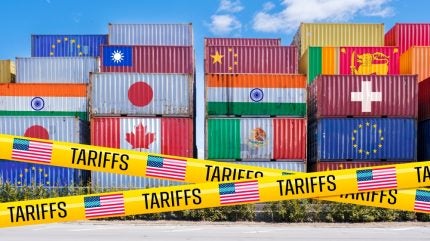
Nearly a century ago, the Smoot-Hawley Tariff Act ushered in one of the most infamous chapters in US economic history. What began as an attempt to protect domestic farmers and manufacturers quickly spiraled into a global trade war, deepening the Great Depression and crippling American exports. Sound familiar?
In the summer of 1930, President Hoover signed into law the Smoot-Hawley Act, raising tariffs on a wide variety of imported goods. The idea was simple: make foreign goods more expensive so US-made products could compete, but it backfired. Trading partners retaliated. Exports collapsed. The US economy sank deeper into crisis. Economists at the time warned of this outcome. They were ignored.
Trump urged to listen to US trade group, economist and manufacturer warnings on tariffs
Today, US trade groups, economists, and manufacturers are offering eerily similar warnings — and once again are being sidelined.
Tariffs hurt in a number of ways. Tariffs are regressive, tariffs hurt the wallets of American consumers, tariffs spook investors, tariffs cause hiccups in consumer sentiment, and tariffs cause business to pause innovation.
Just like in 1930, today’s tariff increases are being promoted as a way to revive domestic manufacturing and bring jobs back to American soil, but these measures are more likely to damage the broader economy than to strengthen it. Tariffs raise input costs for US businesses that rely on global supply chains, while American families are left paying higher prices at the checkout.
At the same time, retaliatory measures from other countries make it more difficult for American-made goods to compete in global markets. While there may be some short-term political gains or isolated job increases in a few sectors, the long-term consequences — reduced competitiveness, higher costs, and slower economic growth — will be felt across the entire economy.

US Tariffs are shifting - will you react or anticipate?
Don’t let policy changes catch you off guard. Stay proactive with real-time data and expert analysis.
By GlobalDataTariffs do not reflect how the US apparel and footwear industry operates today
One key difference in 2025 is that many of the industries being “protected” by tariffs no longer produce at scale in the United States.
Take the apparel, footwear, and accessories industries. Roughly 97% of all clothes, shoes, and bags sold in the US are made abroad. The idea that tariffs will somehow resuscitate domestic production in our sector ignores the economic reality that we no longer have the trained labour force, infrastructure, or investment needed to support this industry at scale. Nor will we anytime soon. The President is right to affirm that tariffs won’t bring about more t-shirt, sneaker, and sock production.
Instead of judging the health of the industry by domestic manufacturing alone, we should recognise its strength in leveraging global value chains to create high-quality jobs at home and promote American culture around the world. By that measure, the US apparel and footwear industry is thriving, directly and indirectly supporting nearly 10m American jobs in design, logistics, sourcing, retail, marketing, and more.
Those who still manufacture in the United States, many of whom are responsible for making our military’s uniforms, should be cherished and supported. But for them also, tariffs, old and new, are not the way to do that as they threaten these jobs by adding unnecessary costs.
Apparel and footwear remain most heavily taxed imports in the US
The legacy of Smoot-Hawley still lingers in this sector. Apparel and footwear are among the most heavily taxed imports in the US economy. In fact, the average effective tariff rate on these products is more than five times higher than the average rate on all other US imports. While fashion accounts for just about 5% of total imports, it shoulders over 25% of the country’s total tariff bill. And now, the tariffs being levied on major trading partners are being stacked on top of those already in place, compounding the cost and burden on American families and businesses.
In practical terms, this means higher prices for everyday necessities — clothing, shoes, backpacks. For US businesses that rely on imported materials, it means thinner margins, slower growth, and in some cases, the end of the road.
New tariffs should not be piled on top of the steep duties this industry already pays. Instead, this moment should be a wake-up call to reform an outdated, regressive tariff structure that disproportionately affects products made for women and families.
Durable trade policy must be built on a modern, equitable foundation; not a 95-year-old system rooted in Depression-era politics that is disconnected from the realities of today’s global economy. The 95th anniversary of Smoot-Hawley should be a cautionary tale — not an instruction manual.
About the author:
Stephen E. Lamar is president and CEO of the American Apparel & Footwear Association, the national trade association representing more than 1,100 brands in the apparel and footwear industry. Steve leads a dedicated team of professionals who represent AAFA members before the government, through the media, and in industry settings on key brand protection, supply chain and manufacturing, and trade issues. Steve also advises AAFA member companies on legislation and regulatory policies. Prior to becoming President and CEO, Steve served as Executive Vice President for the association.
Navigate the shifting tariff landscape with real-time data and market-leading analysis.
Request a free demo for GlobalData’s Strategic Intelligence here.





